Research
Research is a central part of The Image Centre's mandate. This research is focused on the study of photography and related media, with an emphasis on photojournalism and documentary media, from the nineteenth century to the present.
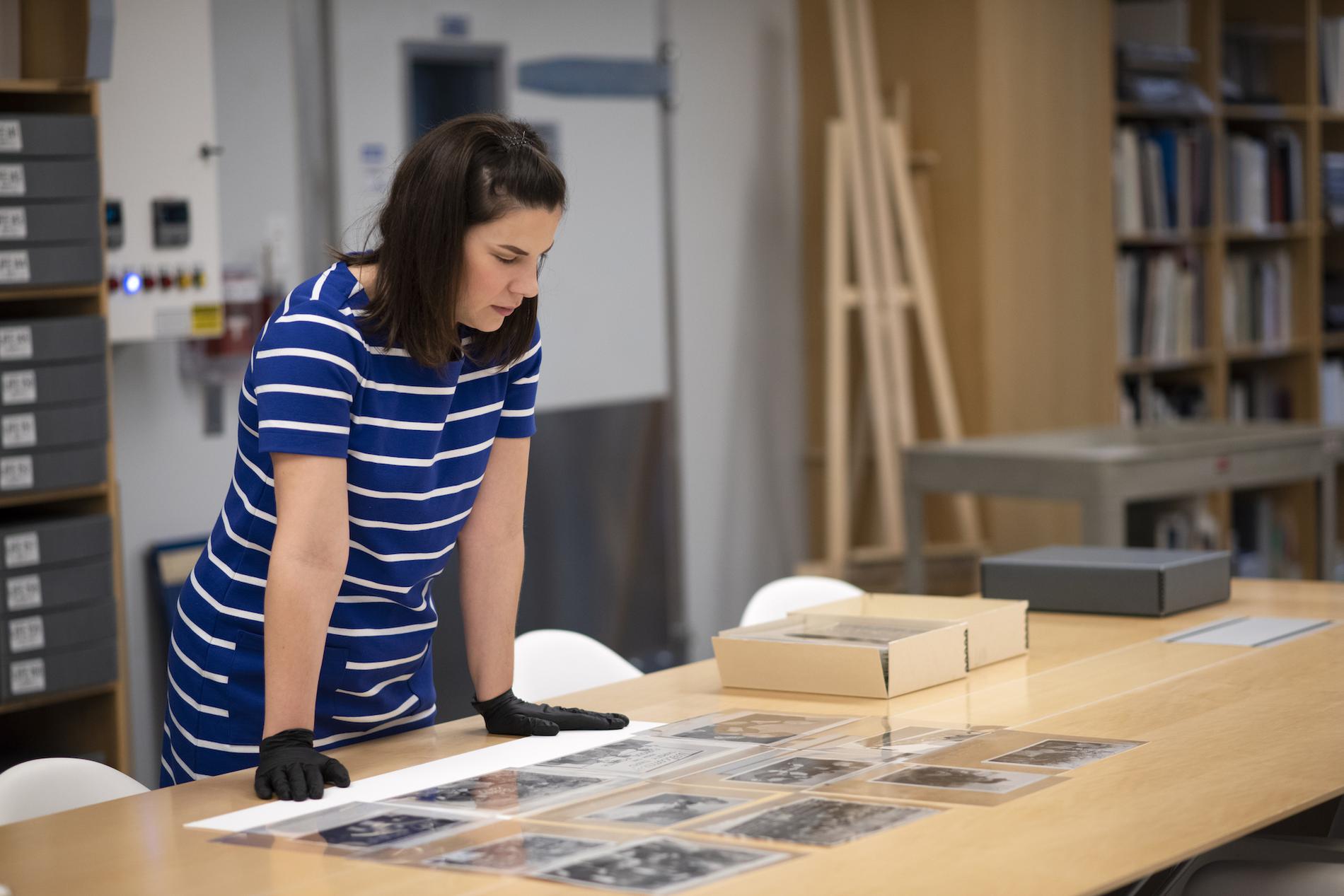
Carla Jean Stokes, 2019 Elaine Ling Fellow. © Rachel Verbin, Peter Higdon Research Centre, The Image Centre.
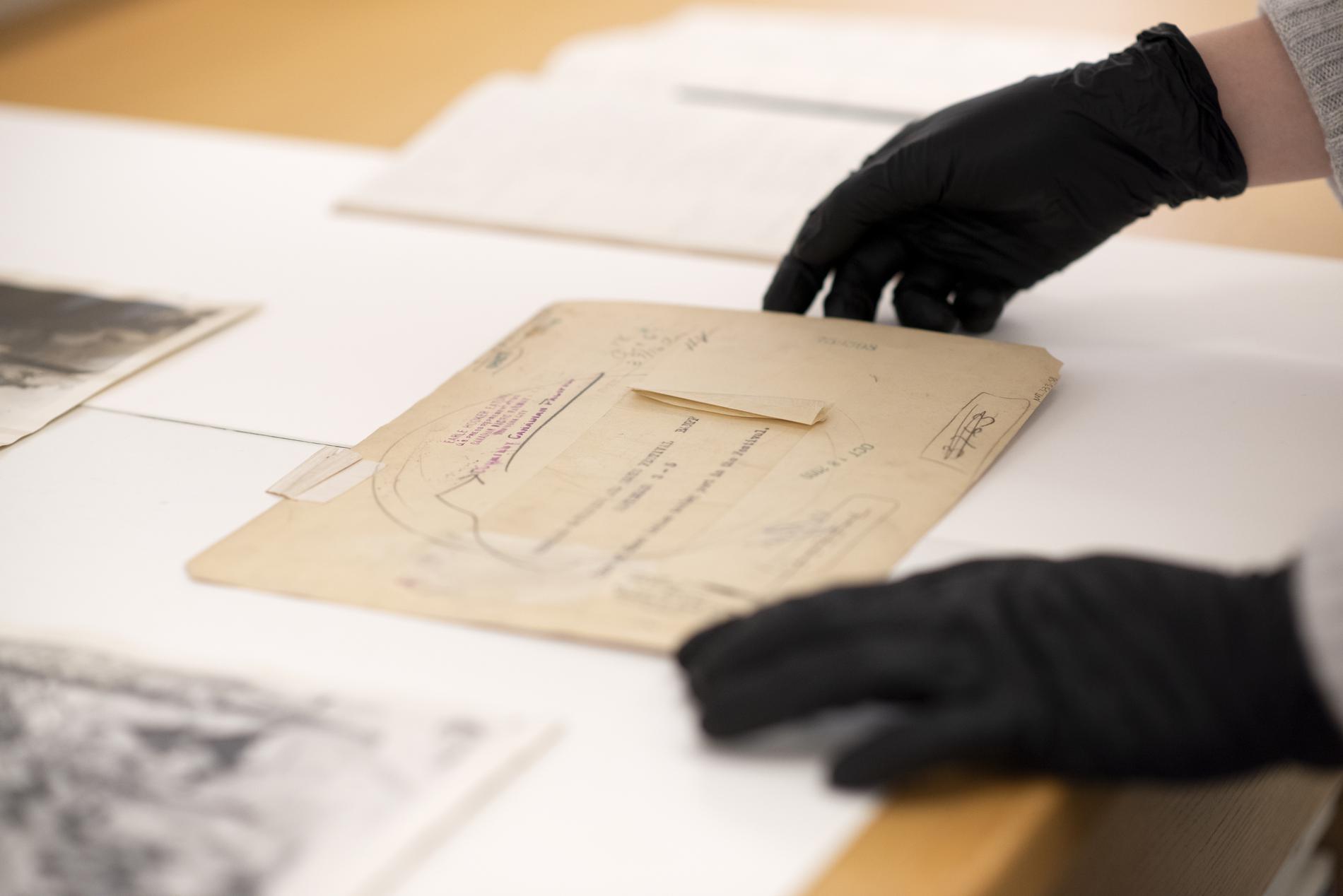
Frances Claire Dorenbaum, 2020 Elaine Ling Fellow. © Rachel Verbin, Peter Higdon Research Centre, The Image Centre.
About
Research is a central part of The Image Centre’s mandate. This research is focused on the study of photography and related media, with an emphasis on photojournalism and documentary media, from the nineteenth century to the present. As part of its dedication to the history of photography and related cultural studies, The Image Centre fosters artist projects related to its collections. The Image Centre also supports research through teaching, workshops, symposia, publications, scholarly and artist fellowships, as well as institutional partnerships. Through these endeavours, The Image Centre has become an international hub for research about photography, welcoming established and emerging academics, as well as students. These scholarly activities have provided the Toronto Metropolitan University community with the opportunity to benefit from the latest research on the role and impact of images in our societies, to discuss and challenge ideas and to take advantage of an international network of researchers.
From the start, one of the first priorities for research at The Image Centre has been to collect and produce data about the 292,000 photographs that make up the Black Star Collection. A series of Student Research Workshops sought to bridge the gap between these prints and their dissemination in the illustrated press. The students involved in the workshops identified these published Black Star pictures in the main North American magazines of the time, including Life, Look and Time. The Image Centre has also organized four symposia, bringing together more than sixty international scholars.
Symposia
Since launching in 2012, The Image Centre has organized five symposia, bringing together more than eighty international scholars.
Conference participants have included emerging scholars (Estelle Blaschke, Helen MacFarlane) and established academics and curators from prestigious institutions such as Princeton University (Anne McCauley), Metropolitan Museum of Art (Malcolm Daniel), Harvard University (Robin Kelsey), Le Louvre Museum (Dominique de Font-Réaulx), University of Chicago (Joel Snyder) and the Museum of Modern Art (Quentin Bajac). Participants and audience members alike gathered to share and discuss methodological research approaches related to images in general, and photography in particular, at Toronto Metropolitan University.
For more information and to watch videos of the symposia, visit:
Photography: The Black Box of History (2018)
Photography Historians: A New Generation? (2015)
Collecting and Curating Photographs: Between Private and Public Collections (2014)
The “Public” Life of Photographs (2013)
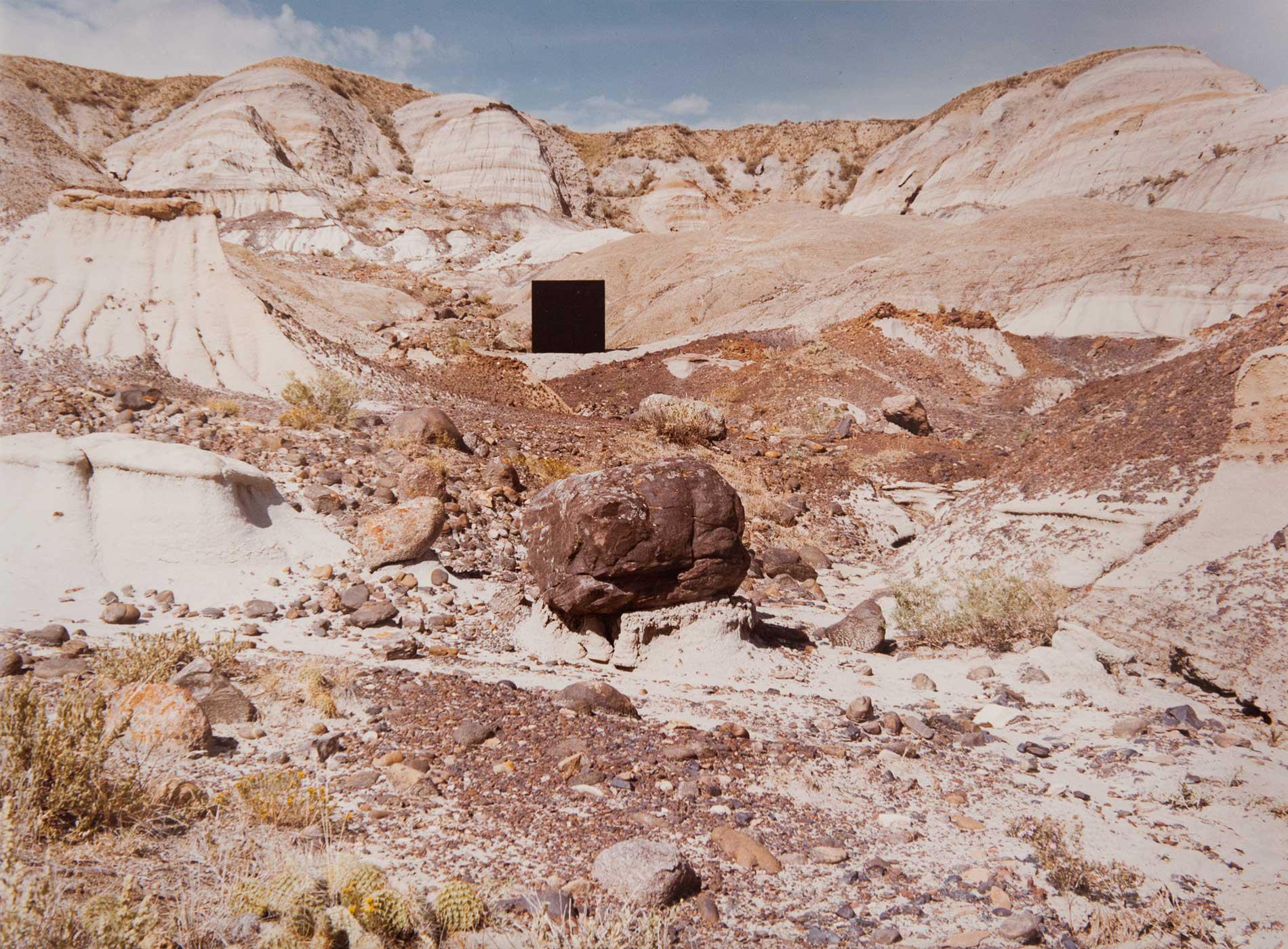
Michael Mitchell, Black Square: Alberta Badlands, Brooks, 1979, chromogenic print. Courtesy of the artist
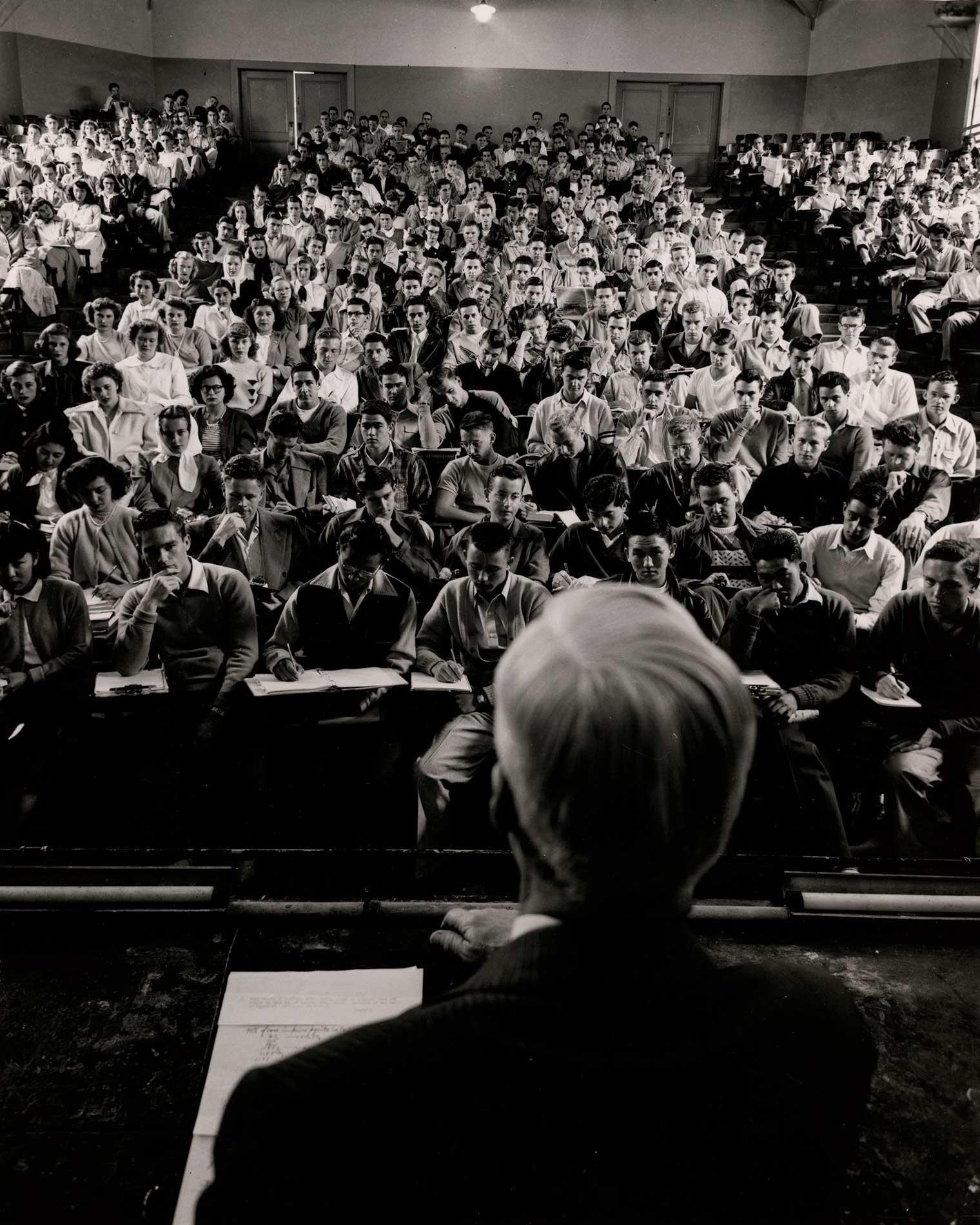
Ralph Crane, [Professor Hildebrand looks at his class, University of California], October 1948, gelatin silver print. The Black Star Collection, The Image Centre
Fellowships
Research fellows have the opportunity to study select areas of The Image Centre's photography collections first-hand. These include the acclaimed Black Star Collection of photo-reportage, with over a quarter-million prints spanning the twentieth century; historic and fine art photography collections; and several archives devoted to the life and work of a diverse group of photographers, including Berenice Abbott, Wendy Snyder MacNeil, Jo Spence, and Werner Wolff. Learn more
The Image Centre's 2024 Research Fellows
The Nadir Mohamed Postdoctoral Fellowship
Jennifer Orpana
Jennifer Orpana is a photography historian and lecturer, with experience teaching topics in photography and museum studies at Toronto Metropolitan University, University of Toronto, OCAD University, Western University, and Brock University. She has worked on education, community outreach, development, and curatorial teams at some of Canada’s leading arts and culture institutions, including the Art Gallery of Ontario, the National Ballet of Canada, and the Royal Ontario Museum. Her writing has been published in RACAR, Fuse Magazine, and Trans Asia Photography, and she coedited a Photography & Culture special issue on family photography with Sarah Parsons (2017).
Abstract
Examining the Proof: The Retouching Practices of Violet Keene Perinchief
This project explores a box of negatives, proofs, handwritten notes, and envelopes from Violet Keene Perinchief’s Oakville studio, spanning from the late 1940s to the 1970s. Produced in the later years of Keene’s professional career, this part of the collection is highly instructive of several key aspects of her portrait studio practice. These documents are complex sites that reflect the personal desires of sitters, reveal the mainstream expectations related to female subjects and idealized feminine bodies, and illustrate how these ideals were further negotiated and articulated in post-production. The notes found on the envelopes and the messages tucked within them reveal the interactions between photographer and clientele, as well as information about order details and prices. On several envelopes, Keene’s handwriting captures her business practice, by indicating when follow-ups are needed, who to contact in the household, and which images could be used as samples. Additionally, many of the proofs, particularly of female subjects, have been marked in pen by the photographer to identify areas in need of retouching. These markings reveal suggested edits such as the cropping of hair styles, the flattening of wrinkles in clothing, the highlights needed on jewelry, or alterations to the subject’s body. The contents of this box reveal social and technical aspects of Keene’s practice in ways that help us to look beyond the visual codes in the final portraits and to see key moments that led to their production.
The Singer Family Doctoral Fellowship
Lucy MacKenzie Howie
Lucy MacKenzie Howie is a SGSAH/AHRC PhD researcher at the University of St Andrews where her thesis focuses on lens-based media from the 1980s–1990s Britain exploring the representation of sexuality and health. She has worked as a Curatorial Assistant at Kettle's Yard, University of Cambridge, and writes regularly for the international art press. Lucy has programmed public events and film screenings at Kettle's Yard (UK), Cambridge Central Library (UK), Edinburgh College of Art (UK) and the University of St Andrews (UK) on projects spanning feminist collections, community art and aesthetics, and HIV/AIDS and disability.
Abstract
Disability, Sexuality and the Politics of Representation: A Reconsideration of Jo Spence's Photo Therapy in 1980s Britain
This project will use the Jo Spence Memorial Archive housed at The Image Centre to analyse the intersecting but often overlooked histories of disability, sexuality, and the politics of representation in photography in 1980s Britain. This will be explored through Jo Spence’s ‘photo therapy’ practice that formed a part of Spence’s critique of Western orthodox medicine and traditional therapies, bringing sexuality, class, and gender to the forefront of discussions on health. This research locates where Spence and her cultural network transformed debates in documentary photography and self-imaging practices to new ends in the context of disability rights activism and in response to Section 28 during this period. Photo therapy will be examined as a radical self-imaging technique that deconstructed pervasive categories of photography like the family album and commercial studio portraiture, which are inextricable from constructions of heteronormativity and ideals of the healthy body.
The Penny Rubinoff Fellowship
Isabelle Lynch
Isabelle Lynch is a PhD candidate in History of Art at the University of Pennsylvania where she studies modern and contemporary art with a focus on photography and film from the mid-nineteenth century to the present. Her dissertation investigates how the use of artificial light in processes of photographic exposure and development altered photography’s relationship to time, space, and the image. She has held positions in curatorial and education departments at the Art Institute of Chicago, the Philadelphia Museum of Art, the Institute of Contemporary Art Philadelphia, the Art Museum at the University of Toronto, and the National Gallery of Canada. She currently lives between Chicago and Paris, where she teaches at the School of the Art Institute of Chicago and at Paris College of Art.
Abstract
Artificial Light: Photography and Alternative Illumination c. 1860–1910
My project interrogates how photography by artificial light sought to recast the limits of the visible world from the mid-nineteenth to the early twentieth century. While histories and theories of photography tend to take the sun’s light as a given—a freely available natural resource that illuminates everything equally everywhere—my dissertation argues that the discovery, invention, and extraction of new materials and technologies of illumination such as limelight, magnesium light, and electricity signaled an important shift from photography’s reliance on the light of the sun to photography’s engagement with materials dislodged from the earth’s crust or made by human hands as alternative sources of illumination. My project’s central premise is that the development and use of artificial light to expand the perimeters of human vision was enmeshed with greater ambitions to conquer time and space and manipulate the limits of what can be known.
The Howard Tanenbaum Fellowship
Elaine Jones
Elaine Jones (she/her) is a graduate student in the Photography Preservation and Collections Management program at Toronto Metropolitan University. She holds a Bachelor of Arts in History, with a Minor in Curatorial Studies from TMU and a Masters in History from the University of Waterloo.
Abstract
The Civil Rights Movement Through T-Shirts
For decades, printed T-shirts have been used as a means to convey messaging from the wearer to the world. In 2021, I published Politics Through T-Shirts: A History of Protest, an exploration of the origins of the T-shirt and its adoption by American protest movements. The online exhibition is free to view at www.tshirtsandprotest.com. Through this fellowship at The Image Centre, I will continue my previous work applying the lens to the Civil Rights Movement. By utilizing the Black Star Collection, I intend to examine the importance placed on the use of the printed T-shirt by Civil Rights activists as a means of furthering the message of equal rights.
The Elaine Ling Fellowship
María del Carmen Barrios Giordano
María del Carmen Barrios Giordano is a graduate student at the UNAM (the National Autonomous University of Mexico) in art history. She has a special interest in the history of photography across the Americas. Giordano received a bachelor's degree from Stanford University where she studied history of science and international relations, and then went on to lead a dilettantish existence between museum education, publishing, and sewing.
Abstract
Victor de Palma in Mexico: Fotoprensa and Black Star
Victor de Palma was an American photojournalist who in the late 1940s and 1950s called Mexico City home. During his time in Mexico, De Palma set up TV and radio stations, ran a photo lab and studio, mentored youth, and sparked the career of perhaps the most revered Mexican photojournalist of the 20th-century: Nacho López. Regrettably, his influence on the history of photography in Mexico is lost; he is neither mentioned nor cited in any scholarly research about Mexican photography, his name is unheard of among photography specialists, and his work has never been exhibited in the country. "Victor de Palma in Mexico" fills this gap, exploring how this expat photojournalist in the 1940s and 50s fit into the vibrant world of mid-century Mexican fotoprensa (photo press).
The Wendy Snyder MacNeil Research Fellowship
Clare Samuel
Clare Samuel is a visual artist originally from Northern Ireland, now living as a settler in Tkaronto. She holds a BFA from Toronto Metropolitan University and an MFA from Concordia University. Her work focuses on connection and distances between the self and other, as well as notions of social division, borders, and belonging. Spanning mediums such as photography, video, text and installation, her projects are often a dialogue with the idea of portraiture. She has exhibited internationally, most recently at OBORO, Belfast Exposed and VU Photo. She teaches at OCADU, Toronto Metropolitan University, and University of Toronto. Her practice has been supported by Canada Council for the Arts, Ontario Arts Council and Toronto Arts Council. Clare is co-founder and co-director of Feminist Photography Network, a nexus for research on the relationship between feminism and lens-based media.
Abstract
An Artistic Dialogue with Wendy Snyder MacNeil
My intention is to have an in-depth dialogue with Wendy Snyder MacNeil's work in expanded forms of portraiture. As a mid-career and middle-aged artist whose focus has been the representations of individuals and groups, I’m entering a period of reflection and change in my practice. This conversation with the archive, the life and legacy, of a pioneering female artist with similar concerns will inform and re-energize my own work. As an arts writer, curator and Co-Director of Feminist Photography Network, I will also be considering ways to bring MacNeil’s work more into the public consciousness. Like many woman photographers, her contribution to the histories of photography is deeply underrepresented.
View all current and past fellows
DISPATCH: War Photographs in Print, 1854–2008
DISPATCH: War Photographs in Print, 1854–2008 examines the production of war photographs, the role of photojournalists, and their collaboration with picture editors in the press. From Roger Fenton’s collodion plate photographs taken during the Crimean War (1853–1856) to Luc Delahaye’s images of the recent conflicts in Afghanistan (2001–present), the photographic representation of war has evolved dramatically in the occidental press over the past 150 years.
By comparing original prints with their reproductions in magazines, and in exhibiting other modes through which visual news is disseminated, DISPATCH reveals that taking a shot is only one step in the process of illustrating a war. Picture editors and art directors have always selected, trimmed, ordered and sequenced war photographs to suit their particular needs. This exhibition views these photographs not as windows open to the world, but as representations that are the product of changing editorial figures, aesthetic priorities and historical contexts.
Publications
In October 2016, The Image Centre began the publication of an academic book series around which The Image Centre research activities are revolved. Published in partnership with the MIT Press, The Image Centre Books series aims to disseminate inquiries into histories, practices and reception of images in general, and photographs, in particular.
The series is comprised of three streams: Critical Ideas gathers articles from different scholars about a concept or a question of interest in the field; Essentials translates fundamental texts published in other languages into English, or proposes critical editions of seminal books/texts about photography; and Collections and Archives provides a point of view on an artist/photographer or organization whose collection is housed at The Image Centre.
The first volume titled The “Public” Life of Photographs (Critical Ideas) was released in October 2016 and is based on the eponymous conference organized at The Image Centre in 2013; the second volume titled, The Eye of History: When Images Take Positions (Essentials) by Georges Didi-Huberman, was released in 2018; the third volume, The Birth of the Idea of Photography (Essentials) by François Brunet, was released in the fall of 2019; the fourth volume, Documentary in Dispute (Collections and Archives) by Sarah M. Miller, was published in fall 2020. Most recently, the fifth volume, Since 1839...Eleven Essays on Photography by Clément Chéroux was published in the fall of 2021.
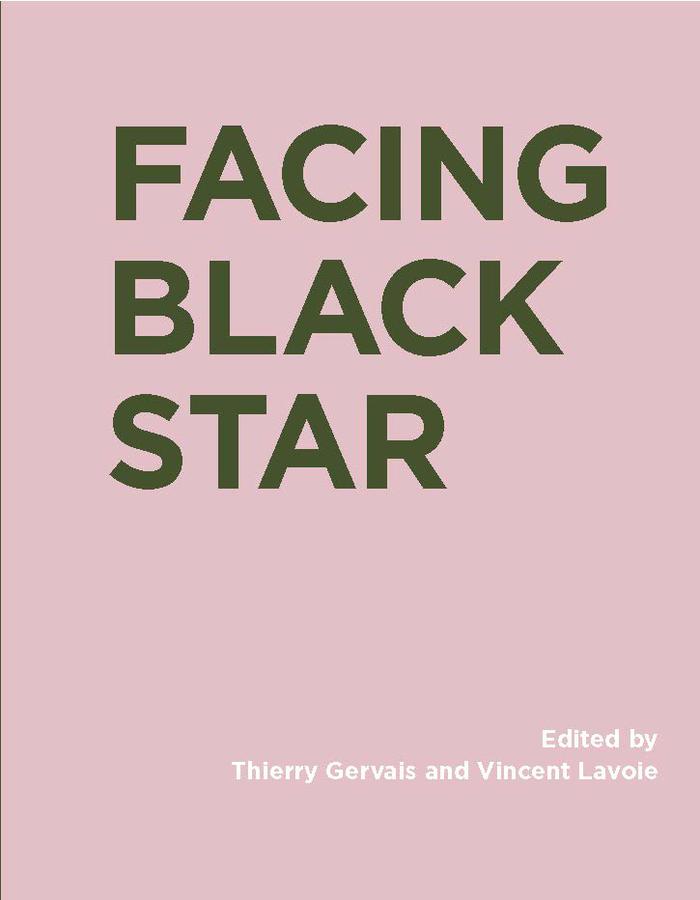
The front cover of Facing Black Star.
Facing Black Star
Edited by Thierry Gervais and Vincent Lavoie
Co-published by: The Image Centre and the MIT Press, 2023
Published: June 13, 2023
The Black Star Collection at The Image Centre: the expectations, challenges, and results of a decade of research in a key photo agency's print collection.
In 2005, Toronto Metropolitan (formerly Ryerson) University (TMU) acquired the massive Black Star Collection from the photo agency previously based in New York City—nearly 292,000 black-and-white prints. Preserved at The Image Centre at TMU, the images include iconic stills of the American Civil Rights movement by Charles Moore, among thousands of ordinary photographs that were classified by theme in the agency's picture library. While the move of the collection from a corporate photo agency to a public cultural institution enables more access, researchers must still face the size of the collection, its structural organization, the materiality of the prints, and the lack of ephemera. Facing Black Star aims to fruitfully highlight this tension between research expectations and challenges.
Coeditors Thierry Gervais and Vincent Lavoie have gathered local, national, and international researchers ranging from graduate students to established scholars and curators to illuminate the staggering range of the collection, from its disquieting record of the Nazis' rise to power to its visual archive of climate change. Each contribution highlights methodological, epistemological, and political issues inherent to conducting research in photographic archives and collections, such as indexing protocols and their impact on research, the photographic archive as a place of visibility and invisibility, and the photographic archive as a hermeneutic tool.
Shedding new light on current issues in the theory and history of photography, this impressive volume containing 100 images will not only discuss the subjects portrayed in the photographs but will also address the history of photojournalism, the role of such a photographic archive in our Western societies, and ultimately photography as a medium.
Like the other volumes of the IMC Books series (MIT Press/The Image Centre [formerly the Ryerson Image Centre]), this publication will appeal as much to academics of visual history as it will to photography enthusiasts in general.
Facing Black Star can be purchased in person at The Image Centre and online here.
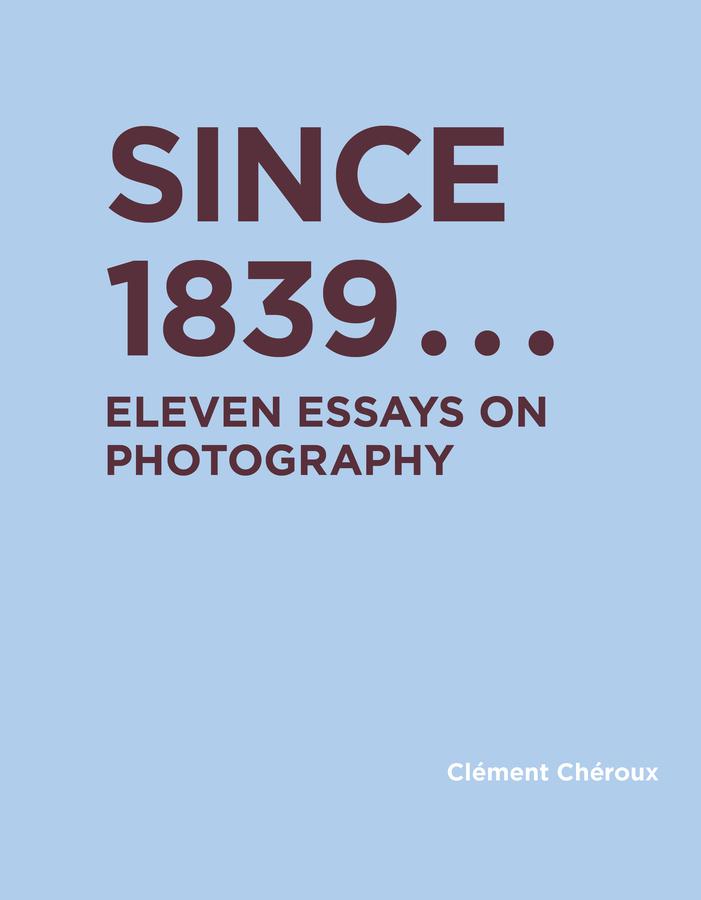
The front cover of Since 1839...
Since 1839... Eleven Essays on Photography
By: Clément Chéroux
Translated by: Shane B. Lillis
Co-published by: The Image Centre (formerly Ryerson Image Centre) and the MIT Press, 2021
Since 1839… offers a selection of essays by the renowned photography historian Clément Chéroux. Appointed Joel and Anne Ehrenkranz Chief Curator of Photography at the Museum of Modern Art (MoMA) in New York in 2020, Chéroux takes on a variety of topics, from the history of vernacular photography to the influence of documentary photography on Surrealism. These texts, newly translated into English and published together in one volume for the first time, reflect the breadth of Chéroux's thinking, the rigor of his approach, and his endless curiosity about photographs.
In this strikingly designed and generously illustrated volume, Chéroux presents unique case studies and untold stories. He discusses ways of sharing images, from the nineteenth century to the digital age; considers the utopian ideals of early photography; and analyzes the duality of amateur photography. Among other things, he describes the appeal of photographs snapped from a speeding train and explains historical value of first-generation prints of photographs. Through an analysis of key photographs taken on 9/11, Chéroux shows that the same six images were seen again and again in the press. Widely ranging, erudite, and engaging, these eleven essays present his innovative investigations of the histories of photography.
Since 1839... Eleven Essays on Photography can be purchased in person at The Image Centre and online here.
Watch the Since 1839... book launch event on YouTube here.
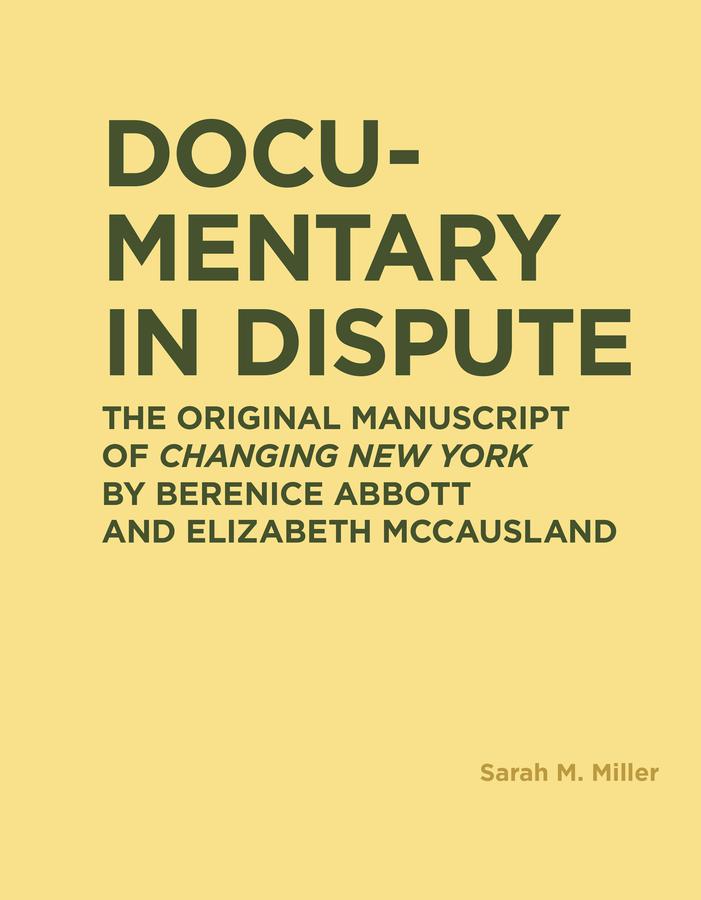
The front cover of Documentary in Dispute.
Documentary in Dispute: The Original Manuscript of Changing New York by Berenice Abbott and Elizabeth McCausland
By: Sarah M. Miller
Co-published by: The Image Centre (formerly Ryerson Image Centre) and the MIT Press, 2020
The 1939 book Changing New York, by Berenice Abbott, with text by Elizabeth McCausland, is an icon of American documentary photography and the career-defining publication by one of modernism’s most prominent photographers. Yet no one has ever seen the book that Abbott and McCausland actually planned and wrote. Here, for the first time, their original manuscript for Changing New York is recreated by sequencing Abbott’s one hundred photographs with McCausland’s astonishing caption texts. This reconstruction is accompanied by a selection of archival documents that illuminate how the project was developed, and how it was drastically altered by its publisher. Author Sarah M. Miller analyzes the original manuscript and its revisions to unearth Abbott and McCausland’s critical engagement with New York City’s built environment and their unique theory of documentary photography. The battle over Changing New York, she argues, stemmed from disputes over how Abbott’s photographs—and photography more broadly—should shape urban experience on the eve of the futuristic 1939 World’s Fair. Ultimately it became a contest over the definition of documentary itself. Gary Van Zante and Julia Van Haaften contribute an essay on Abbott’s archive and the partnership with McCausland that shaped their creative collaboration.
Winner of the 2021 Photography Network Book Prize
"The documentation of Abbott and McCausland’s original vision, and how that vision was muted and reworked by its publisher and federal sponsors, is both enraging and revelatory, and Miller’s commentary gives bold insight into how the project as it was originally intended articulated a new theory of documentary photography."
Documentary in Dispute: The Original Manuscript of Changing New York by Berenice Abbott and Elizabeth McCausland can be purchased in person at The Image Centre (formerly Ryerson Image Centre) and online here.
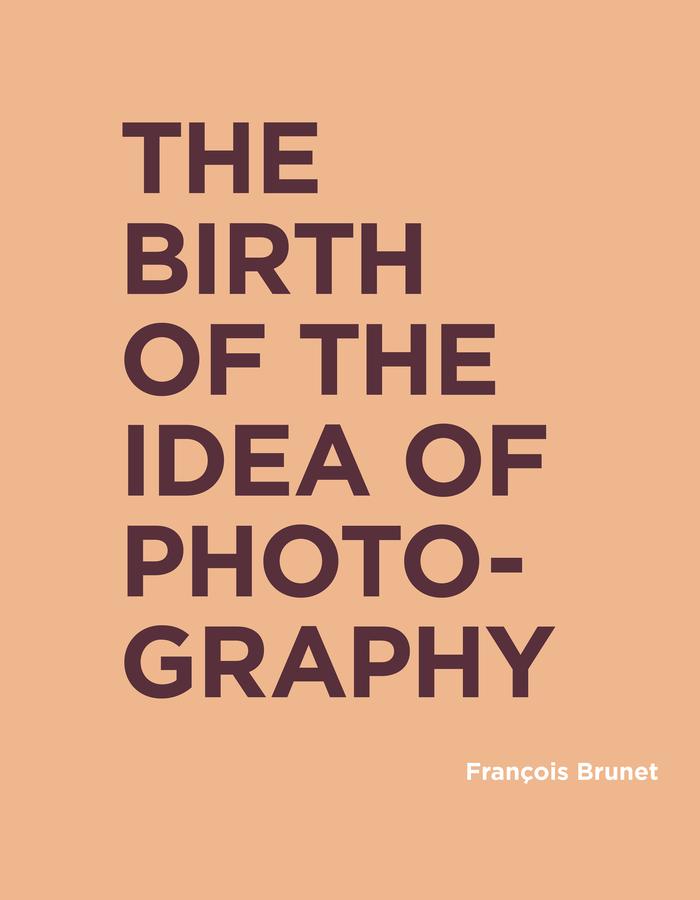
The front cover of The Birth of the Idea of Photography.
The Birth of the Idea of Photography
By: François Brunet
Translated by: Shane B. Lillis
Co-published by: The Image Centre (formerly Ryerson Image Centre) and the MIT Press, 2019
Half synthesis and half essay, François Brunet’s seminal book, translated into English for the first time, is devoted to the invention and history of photography as the birth of an idea rather than of a new type of image. This idea of photography combines a logical or semiological theme—that of an art without artistry—and the democratic political promise of an art for all. Officially endorsed by the 1839 French law on the daguerreotype, this idea reverberated throughout the nineteenth century. The book shows how emerging image technologies and practices in France and Britain were linked to this logical/political construction of photography, from the earliest research of Nicéphore Niépce, Louis-Jacques-Mandé Daguerre, and William Henry Fox Talbot up to the turn of the twentieth century. The parallel development of the Kodak camera and Alfred Stieglitz’s “straight” vision in the United States then fulfilled (while also depreciating) the utopian promise of a photography for all. This history reached a provisional climax with reflections on the medium by Ralph Waldo Emerson, Hippolyte Taine, Sigmund Freud, Henri Bergson, and Charles Sanders Peirce—reflections that both demonstrated the utter novelty of photography and forecast many later debates on its technology and aesthetics.
The Birth of the Idea of Photography can be purchased in person at The Image Centre (formerly Ryerson Image Centre) and online here.
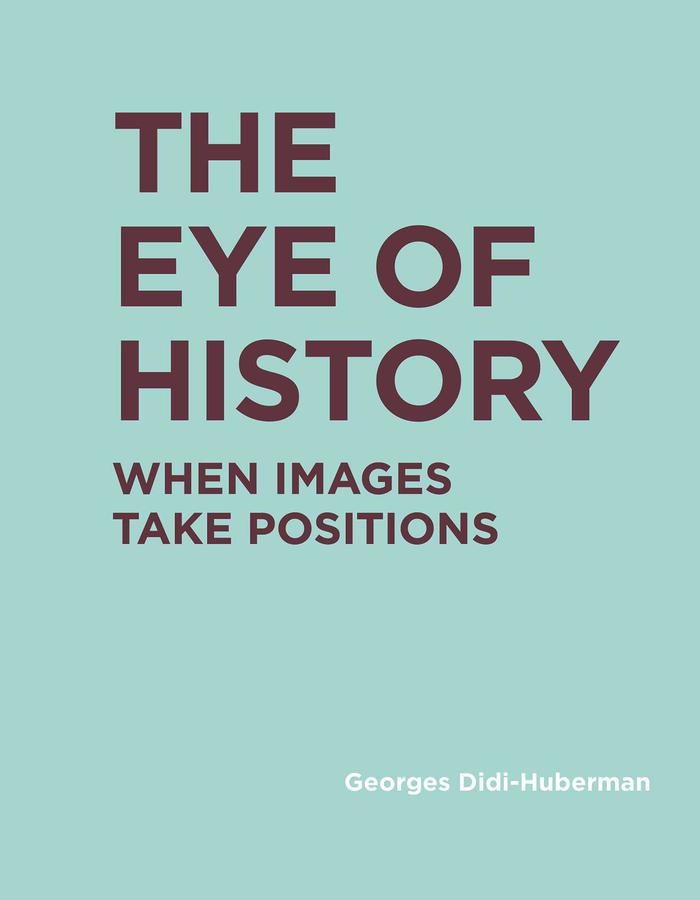
The front cover of The Eye of History: When Images Take Positions
The Eye of History: When Images Take Positions
By: Georges Didi-Huberman
Co-published by: The Image Centre (formerly Ryerson Image Centre) and the MIT Press, 2018
From 1938 to 1955, German playwright Bertolt Brecht filled his working journal (Arbeitsjournal) and an idiosyncratic atlas of images, War Primer, with montages of war photographs and texts clipped from magazines, adding his own commentary. In The Eye of History: When Images Take Positions, acclaimed French theorist and art historian Georges Didi-Huberman explores the interaction of politics and aesthetics in Brecht’s creations, explaining how they became his means for “taking a position” about the Nazi war in Europe. This book represents the second volume in The Image Centre (formerly Ryerson Image Centre) books series, co-published with the MIT Press.
The Eye of History: When Images Take Positions can be purchased in person at The Image Centre (formerly Ryerson Image Centre) and online here.
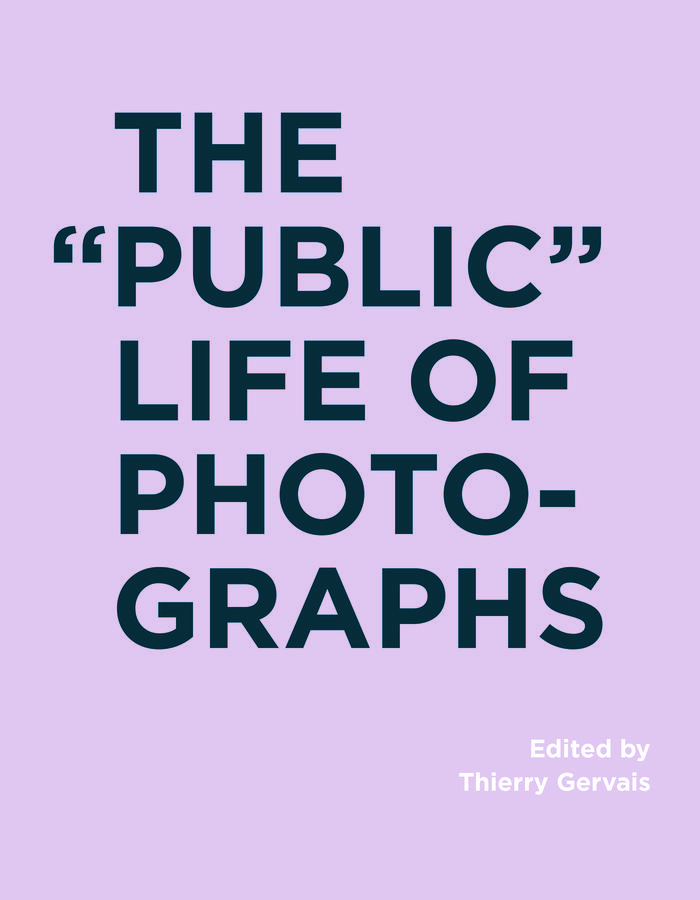
The front cover of The "Public Life" of Photographs
The "Public" Life of Photographs
Edited by: Thierry Gervais
Co-published by: The Image Centre (formerly Ryerson Image Centre) and the MIT Press, 2016
Do we understand a photograph differently if we encounter it in a newspaper rather than a book? In a photo album as opposed to framed on a museum wall? The “Public” Life of Photographs explores how the various ways that photographs have been made available to the public have influenced their reception. The reproducibility of photography has been the necessary tool in the creation of a mass visual culture. This generously illustrated book explores historical instances of the “public” life of photographic images—tracing the steps from the creation of photographs to their reception.
The contributors—international curators and scholars from a range of disciplines—examine the emergence of photography as mass culture: through studios and public spaces; by the press; through editorial strategies promoting popular and vernacular photography; and through the dissemination of photographic images in the art world. The contributing authors discuss such topics as how photographic images became objects of appropriation and collection; the faith in photographic truthfulness; Life magazine’s traveling exhibitions and their effect on the magazine’s “media hegemony”; and the curatorial challenges of making vernacular photographs accessible in an artistic environment.
The "Public" Life of Photographs can be purchased at The Image Centre (formerly Ryerson Image Centre) and online here.
Contributors: Geoffrey Batchen, Nathalie Boulouch, Heather Diack, André Gunthert, Sophie Hackett, Vincent Lavoie, Olivier Lugon, Mary Panzer, Joel Snyder
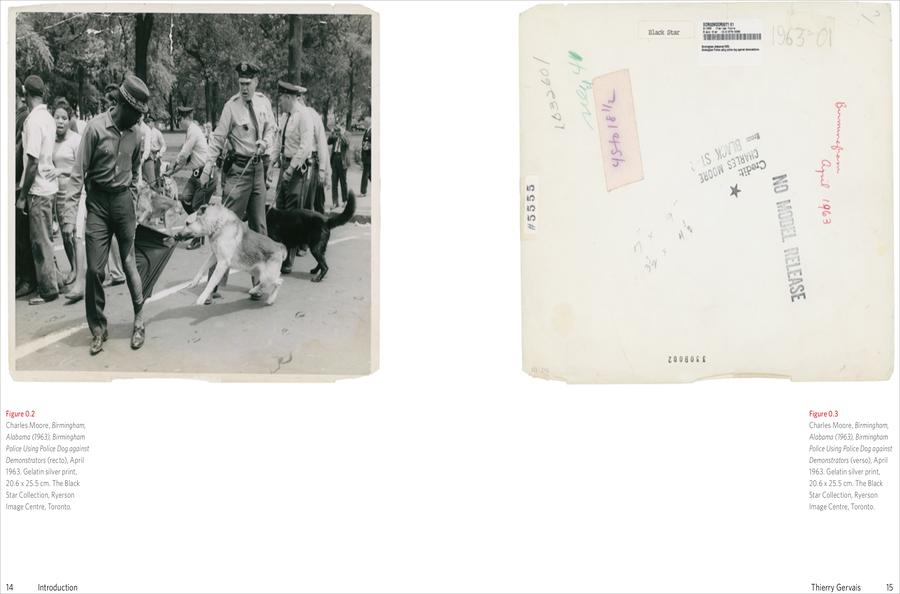
A page from The "Public" Life of Photographs
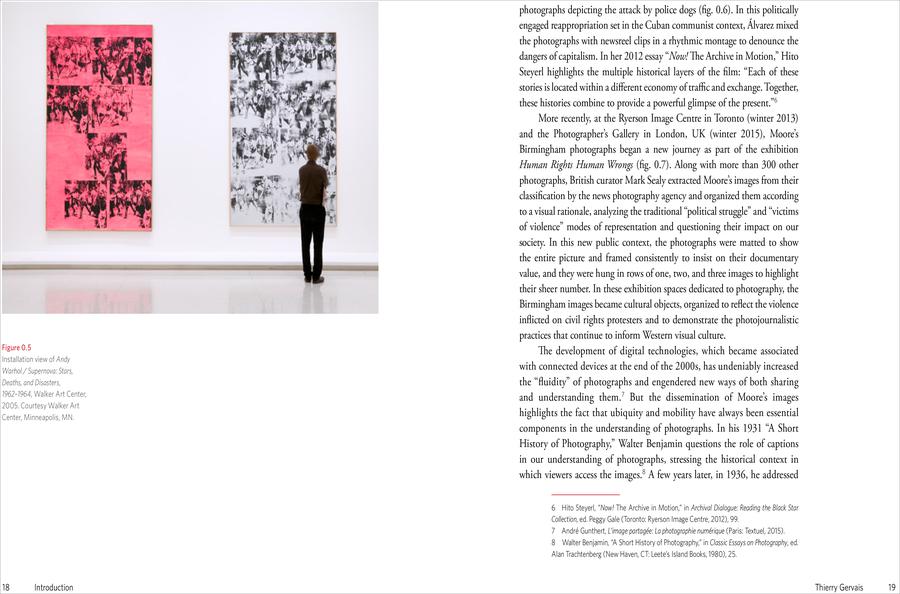
A page from The "Public" Life of Photographs